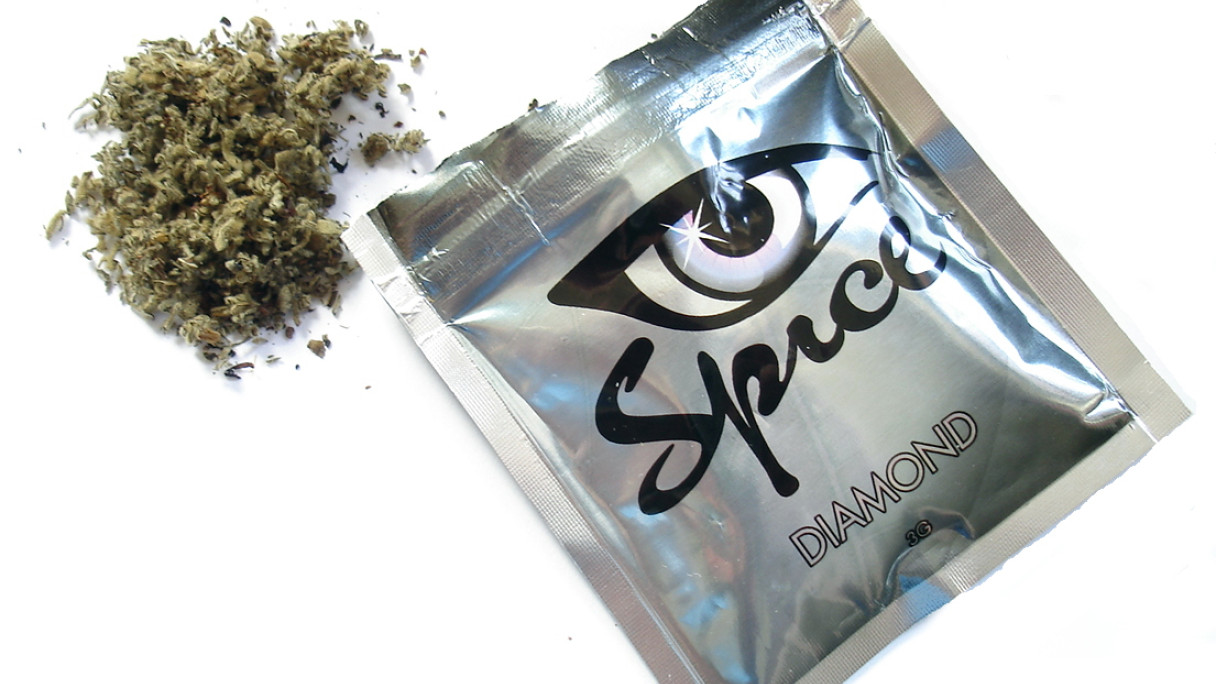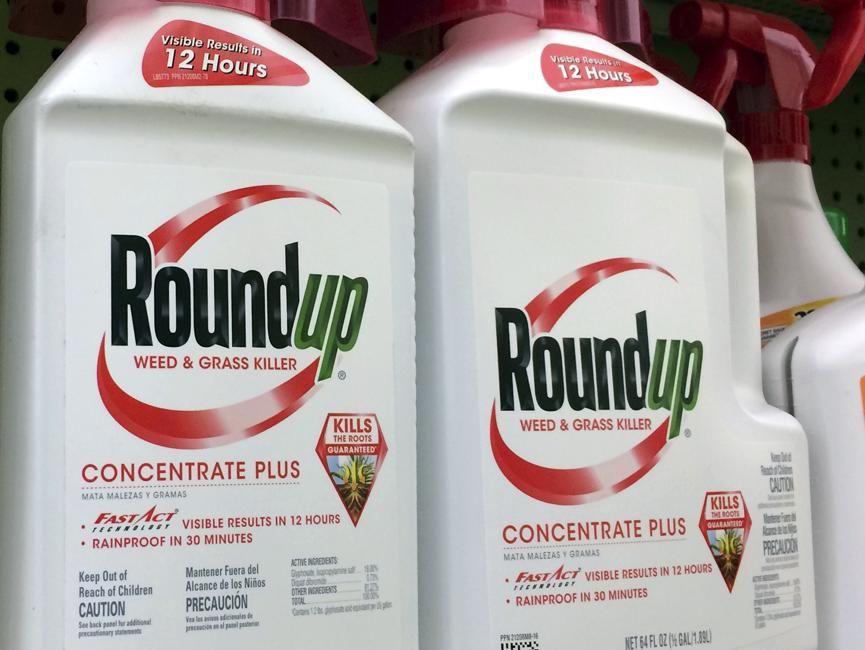When Heather Y. was offered K2 for the first time, she thought her friend was just giving her a new strain of cannabis. It certainly looked and smelled like normal marijuana, and for the first ten minutes or so, it felt exactly like it. Then, the hallucinations started.
They were so strong that, for a moment, Heather, who asked that her identity be protected, thought she had taken LSD. As the furniture seemed to ripple and shake, she felt her heart rate speed up. Her chest hurt. Her temperature rose and she stumbled to the window to get some air. Along the way, Healther fainted, and when she awoke, she was in the hospital.
In late July, the Food and Drug Administration released a statement about the hundreds of severe reactions and a handful of deaths, across about ten states, associated with synthetic cannabinoid products contaminated with brodifacoum, a chemical typically found in rat poison.
“These unapproved products are being sold in convenience stores and gas stations as substitutes for marijuana under names such as ‘K2’ and ‘Spice.’ Use of these illegal products pose significant public health concerns for both individuals who may use the contaminated products and the US,” Commissioner Scott Gottlieb wrote in the statement.
As the FDA noted, many of the severe reactions to contaminated synthetic cannabinoid products occurred in the Midwest. Between March 10 and May 30, 2018, the Illinois Department of Public Health reported 164 cases of unusual and severe bleeding following use of synthetic cannabinoids in the state. Cases were concentrated in Chicago, Peoria, and Tazewell Counties. The symptoms were shocking: some patients vomited blood, while others had severe bloody noses, bleeding gums, or bloody urine. At least three people have died in the state after consuming synthetic cannabinoids due to such complications. Additional blood-clotting problems were reported around the same time in Indiana, Maryland, Missouri, and Wisconsin. And in the past two weeks, D.C. has seen more than 300overdoses as a result of synthetic cannabinoids.
Many of the outbreaks this year seem to have one key thing in common: rat poison. And while the National Institute on Drug Abuse noted in February that “use of these drugs is associated with a rising number of deaths,” it may be that the products are more dangerous, not that use is on the rise. March data from the American Association of Poison Control Centers shows use in 2017 was lowest it’s been since 2011, though numbers fluctuate year to year.
People tend to associate these synthetics with cannabis, but they are not the same. These chemicals are man-made. In fact, as Jenna Valleriani, strategic advisor for Canadian Students For Sensible Drug Policy, puts it, synthetic cannabinoids were “created to mimic cannabis.” Compounds are typically sprayed directly onto dried plant material or infused in vaporized liquids. They are associated with marijuana because many of them have chemical structures that are similar to those of natural cannabinoids and/or have structures that allow them to bind to the cannabinoid receptors present in the body.
** To get original news and analysis like this from veteran journalists straight to your inbox every morning, sign up for Cannabis Wire’s daily newsletter here. (This newsletter is free for now, but will soon be available only to Cannabis Wire subscribers.) **
While the Drug Enforcement Administration banned a handful of synthetic cannabinoids in 2011, and former president Barack Obama signed the Synthetic Drug Abuse Prevention Act in 2012, these substances remain a cheap high that’s widely available, from New York City bodegas to Los Angeles smoke shops. Synthetic cannabinoids can be easily purchased online, too.
It was in the King Mini Mart convenience store in North Lawndale, on the west side of Chicago, where police arrested and charged three workers with conspiring to distribute and sell a controlled substance following undercover purchases of synthetic cannabinoids in April. The store sold substances labeled “Matrix,” “Blue Giant,” and “Crazy Monkey.” A Peoria, Illinois man was charged in the same month with homicide after police found fifteen pounds of the substance linked to one of the state’s three deaths in his apartment. Synthetic cannabinoid products found on the premises contained rat poison. Although synthetic cannabinoids are generally considered dangerous, this particular outbreak of severe bleeding in synthetic cannabinoid users is consistent with exposure to rodenticides.
“Each day we’ve seen the number of cases rise,” Nirav Shah, Illinois Department of Public Health director, said in a statement in April. “Synthetic cannabinoids are unsafe. They are not regulated and people don’t know what chemicals may be in them, like rat poison. While efforts are underway to get the contaminated drugs out of circulation, it’s possible they could re-emerge. We urge people not to use synthetic cannabinoids now or ever.”
Less than a month after the aforementioned Chicago-area outbreak, similar cases of severe bleeding resurfaced throughout Illinois, primarily in Winnebago County. Shah made another statement in late June. “We don’t know if this is a new batch of drugs or product that has been held back from when we began seeing cases at the end of March, but it reiterates the importance of staying away from synthetic cannabinoids.”
Synthetic cannabinoids are drugs known as new psychoactive substances, or NPS. They are commonly sold under names such as K2, Spice, and Black Mamba, or just “incense.” However, a wide variety of other synthetic cannabinoid brands exist, and are available for as little as a dollar per high. Although synthetic cannabinoids are illegal in Illinois, they’re unregulated or legal in various countries worldwide. And in fact, synthetic cannabinoids are currently legal in many states in the US.
One of the primary reasons synthetic cannabinoid products are dangerous is because of the lack of regulation. Producers constantly alter chemical structures and formulas in order to remain one step ahead of a sort of whack-a-mole approach to outlawing these products. This has led to a variety of synthetic cannabinoid products in a short time. The number of synthetic cannabinoids reported in the United States went up from two in 2009 to eighty-four in 2015.
Synthetic cannabinoids were first created in 1965, with the synthesis of delta-9-tetrahydrocannabinol (THC). (In fact, this led to the first FDA-approved cannabinoid-based medicine, Marinol, in the 80s, and to many breakthroughs in cannabinoid research.) Some synthetics are created to resemble the structure of a cannabinoid found in cannabis plants, which the initial synthesis of THC aimed to do, and others only mimic cannabinoids’ effects on the body. Several of these latter synthetics were developed for the medical community as potential analgesics. Others were commercially available as research chemicals.
In general, synthetic cannabinoids act on what are known as CB1 receptors. There are two types of cannabinoid receptors in human cells: CB1 and CB2. These receptors are associated with the typical physiological and psychological effects of cannabis.
The structural similarities and mechanisms of action between marijuana’s natural cannabinoids and synthetic cannabinoids have led to synthetics being known to some as “fake weed.” As cannabis products are still illegal in many places, this has resulted in the perception that synthetic cannabinoids are a safe alternative. However, synthetic cannabinoids can be much stronger than the natural cannabinoids in marijuana, and the effects can be unpredictable—even without dangerous additions like rodenticides. They are “more potent,” Valleriani told Cannabis Wire, “with a host of very serious consequences not seen with natural cannabis, such as seizures, significant harms to physical and mental health, as well as potential death.”
There is evidence that, given the option, users of synthetic cannabinoids prefer natural cannabis products. But, people used synthetic cannabinoids because they were easily available, cheap, and because consumers thought they were legal, according to the survey in the American Journal of Drug and Alcohol Abuse. Users might also resort to a synthetic cannabinoid-high when trying to avoid job-related penalties related to drug tests. The continued existence of dangerous synthetic cannabinoid products, Valleriani said, is “really a direct consequence of cannabis prohibition.”
“It’s interesting that they were originally marketed as a ‘safe’ alternative to natural cannabis,” Valleriani said. “We actually know that its harm profile has been considered greater than other illicit substances.”
Credit: cannabiswire.com













